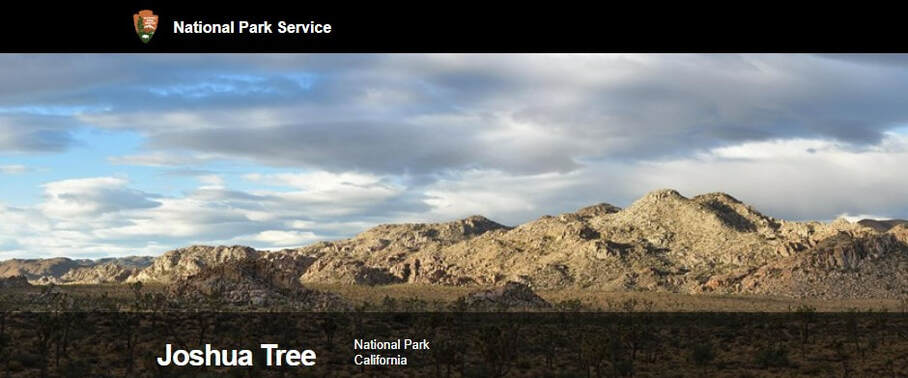Joshua Tree National Park
Shortly after Rich joined Lutheran Hour Ministries in 2008, he was sent to Palm Desert, California, to make a presentation.
Carol went with him and they took a side trip to Joshua Tree National Park.
Carol went with him and they took a side trip to Joshua Tree National Park.

About the Land
Two distinct desert ecosystems, the Mojave and the Colorado, come together in Joshua Tree National Park. A fascinating variety of plants and animals make their homes in a land sculpted by strong winds and occasional torrents of rain.
About the Tree
Joshua trees are spiny, tree-like plants that are native to the Mojave Desert. Although they look somewhat like palm trees, they are actually Yuccas, members of the asparagus family and close relatives of Agave, the plant used to make tequila. Their strange and twisted limbs are the iconic image of the Western American landscape, celebrated in the folklore and popular culture of the region.
According to legend, early Mormon settlers saw the silhouette of the Prophet Joshua in the trees’ outstretched branches. The first scientist to formally describe the Joshua tree, William Trelease, considered Joshua trees to be “the most attractive of all the Yuccas,” but the twentieth century botanist Susan McKelvey described the tree’s fleshy, greenish-white flowers as “curious rather than beautiful”, adding, “One would not be surprised to see a huge prehistoric monster standing by and feeding upon the fruit.” Indeed, the trees’ otherworldly appearance has gotten them “cast” as the inhabitants of alien worlds, providing backdrops to science fiction films and TV shows from Star Trek to Joss Whedon’s Firefly. It is also claimed that the Joshua tree was the inspiration for the Truffula Trees in Dr. Seuss’s The Lorax — and of course the Irish rock band U2, inspired by the romance of the American West, named their hit 1987 album The Joshua Tree. (joshuatreegenome.org/joshua-trees/)
According to legend, early Mormon settlers saw the silhouette of the Prophet Joshua in the trees’ outstretched branches. The first scientist to formally describe the Joshua tree, William Trelease, considered Joshua trees to be “the most attractive of all the Yuccas,” but the twentieth century botanist Susan McKelvey described the tree’s fleshy, greenish-white flowers as “curious rather than beautiful”, adding, “One would not be surprised to see a huge prehistoric monster standing by and feeding upon the fruit.” Indeed, the trees’ otherworldly appearance has gotten them “cast” as the inhabitants of alien worlds, providing backdrops to science fiction films and TV shows from Star Trek to Joss Whedon’s Firefly. It is also claimed that the Joshua tree was the inspiration for the Truffula Trees in Dr. Seuss’s The Lorax — and of course the Irish rock band U2, inspired by the romance of the American West, named their hit 1987 album The Joshua Tree. (joshuatreegenome.org/joshua-trees/)